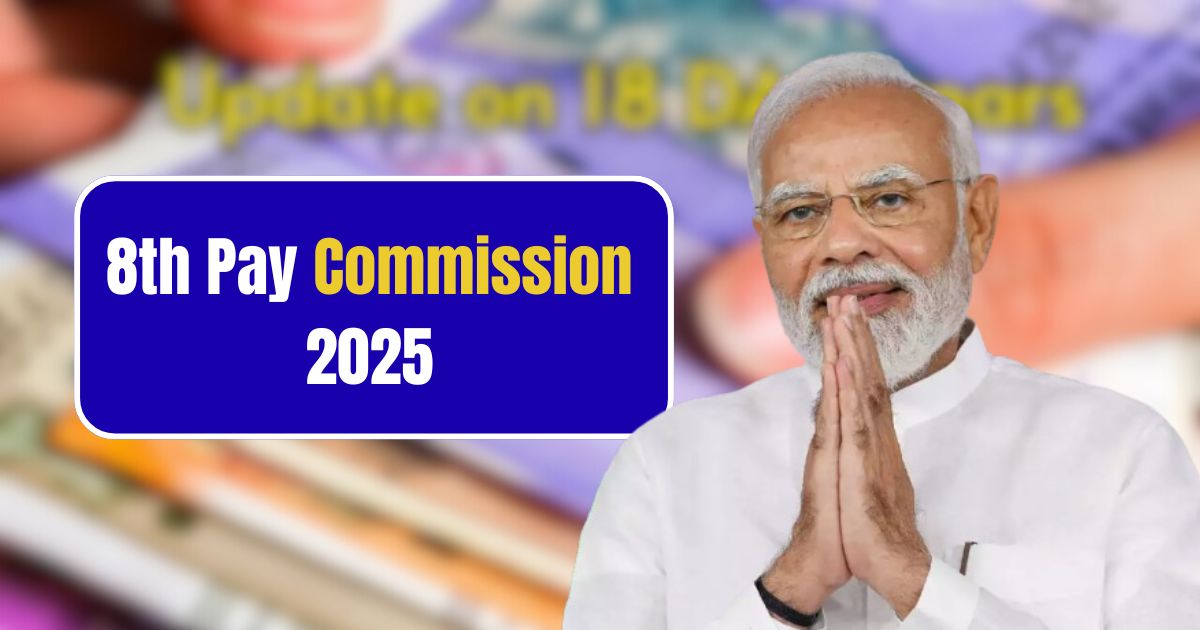When you imagine stepping into your office, your eyes are fixed on where your soon-to-be bigger paycheck is going and how many opportunities it will open for you. The 8th Pay Commission comes as a financial relief—approved in January 2025, it promises to be a significant reshuffling of the paycheck, pension, and other perks structures that have stopped people dreaming big, up to family vacations and secure retirements. The low buzz on increases around the office has started to ignite excitement. What do you think will be the big changes in the coming year 2026?
Government Approves Top Reforms
The milestone was set when the Union Cabinet gave its go-ahead in January 2025. The commission will be making changes that will affect almost 50 lakh working employees and 65 lakh pensioners, and, of course, it will be the same ripple effect to the states that practically replicate the central standards. A formation process unlike any previous one was stuck in its efforts and it was August until the Finance Ministry officials told the House that the notifications are on the way “in due course” by getting the vital feedback from the ministries of Defence and Home Affairs. The employee unions, under the lead of NCJCM, started writing letters in June to push the quick finalization of the Terms of Reference (ToR) to restrain the uncertainty. This kind of situation may cause some people to lose their patience, but it also reveals a bigger picture of the thorough groundwork being done for a just update.
Fitment Factor
The fitment factor is at the core of a pay increment since it is a kind of a basic pay changer. The 2.57 figure of pay multiplication by the 7th Pay Commission raised the lowest income to Rs 18,000. The talk is now about 2.86 for the 8th Pay Commission which is likely to pull the starting salary up to Rs 51,480. The pensions from Rs 9,000 can be increased to Rs 25,740. The expert opinions see a 20% overall increase, meaning that very high expectations are mixed with the wisdom of taking a responsible financial approach. This constant adjustment guarantees that salaries are not left behind in the inflation race and thus the public servants’ morale remains high in an ever-changing economy.
The Rolling Out Clock
The aspirants do not want anything less than a commencement of the new scheme on the 1st of January 2026 which will be even with the completion of the 7th Pay Commission. Still, the news in mid-2025 forets slackening–perhaps to 2026 or 2027 by the time the committee appointments are not made. The course follows the way of past cases: forming a task force, submitting the report, making cabinet changes, and lastly, execution. The rise in the potential Dearness Allowance (DA) in early 2026 can round off the edges, which means it would melt into the new basic scales. The arrears coming out of the long delay could be a good way of compensating and the employees will not feel having lost something in the interim, rather they should feel the rewards of their loyalty being given to them in new cash.
Different Dimensions
Although salaries dominate the discussion, perks do have an equal role to play and they are as equally important. HRA and TA face reviews keeping in mind the cost of city life. In the meeting of SCOVA in March 2025, there was a staggering rise from Rs 1,000 to Rs 3,000 of the Fixed Medical Allowance for pensioners, which is a significant relief to health care expenses. Beyond this, other fringe benefits like travel and productivity payouts usually before Diwali bring a happy note to the situation. These adjustments create a supportive environment in the organization by improving the work-life balance and elevating the economy at the same time.
Economic Ripples
This commission has an immense influence on the national economy, by just making all the wages bigger, it also sets off greater wealth production. If staff gets paid more, the increased spending power can be a good source for the retail, housing and automobile industries to go up, as per the economic studies. Since January 2015, the DA has been at 55% and it is likely to edge to 58% by July of the same year. Hence, the temp relief is to protect the delay victims. Unquestionably, the present give-and-take in the India administrative system still continues as fair compensation not only dictates one’s work but also ensures that the right people are maintained. On the flip side, the growth of the economy through these measures can make public service a glamourous career.
| Pay Level | Current Basic Pay (Rs) | Expected Hike (20%) | Revised Basic Pay (Rs) |
|---|---|---|---|
| Level 1 | 18,000 | 3,600 | 21,600 |
| Level 5 | 29,200 | 5,840 | 35,040 |
| Level 10 | 56,100 | 11,220 | 67,320 |
| Level 15 | 1,12,400 | 22,480 | 1,34,880 |
Also Read: RBI New Jan Dhan Rules: You’ll Now Get These Big Banking Benefits for Free!
